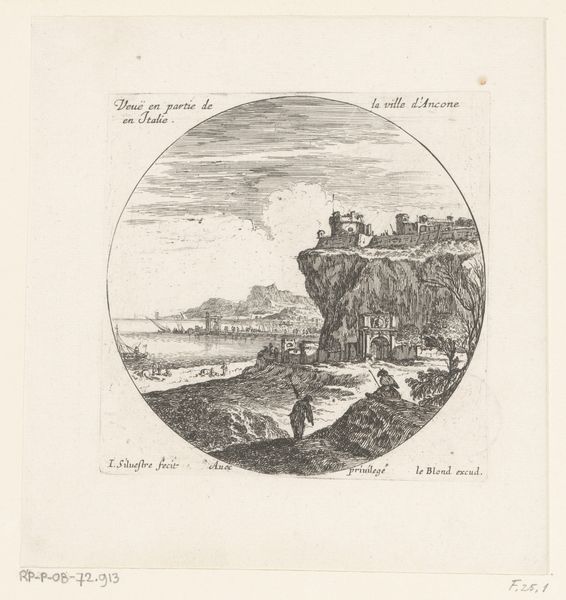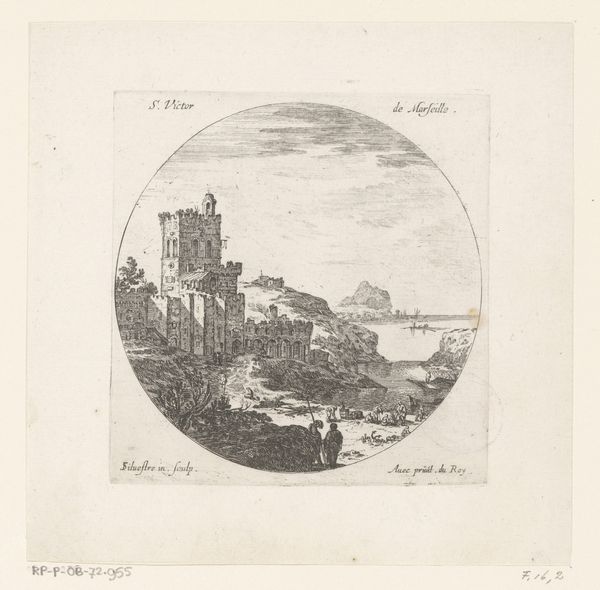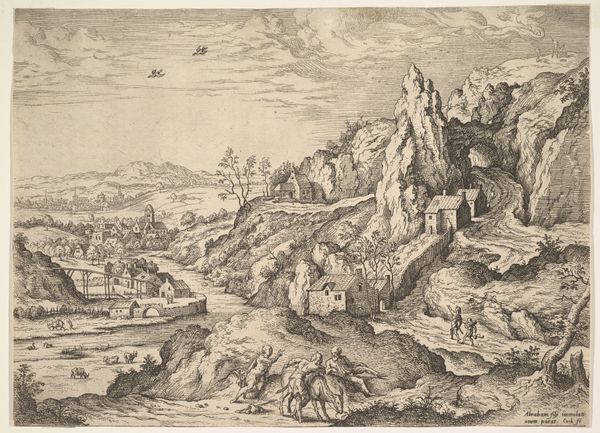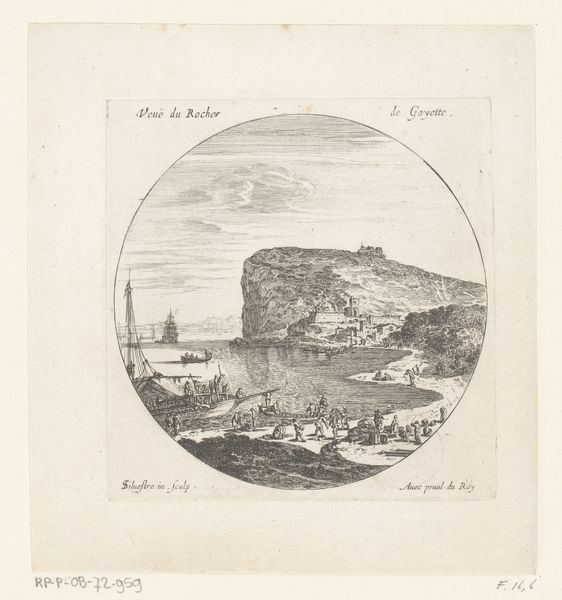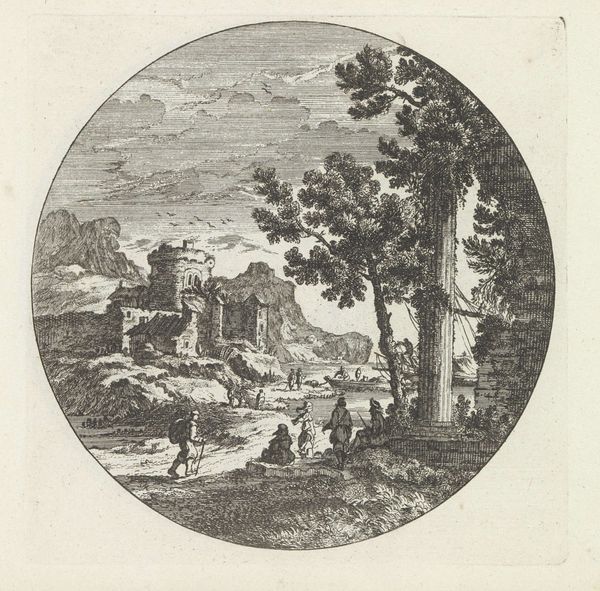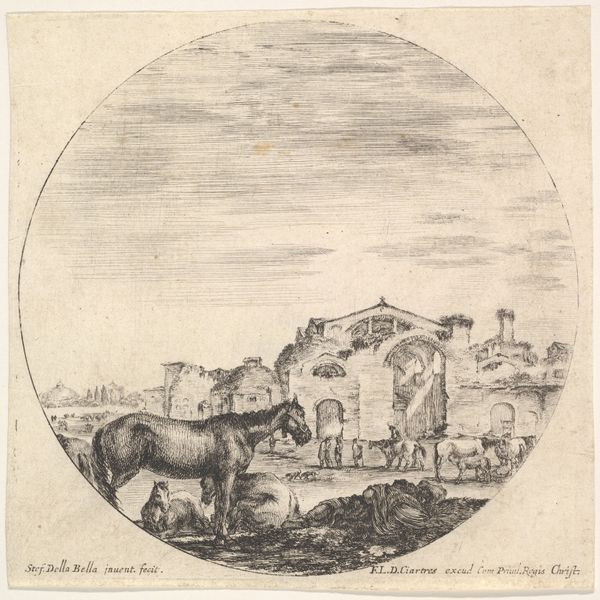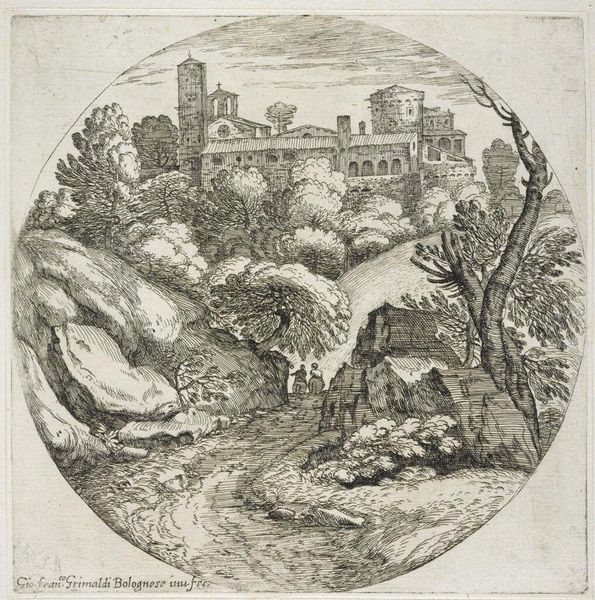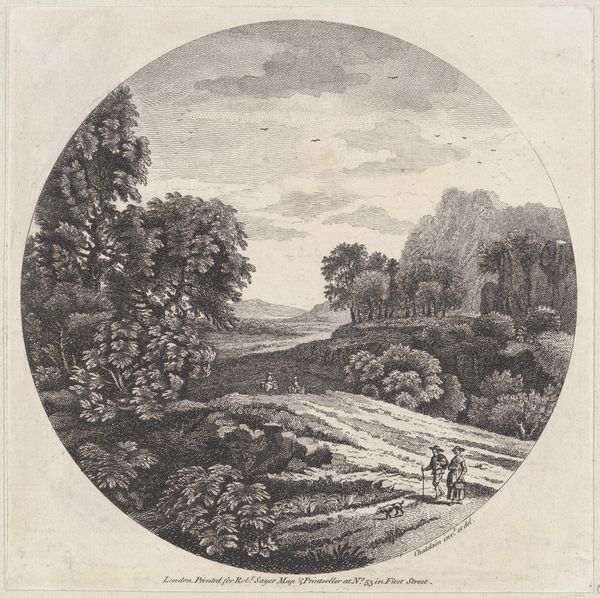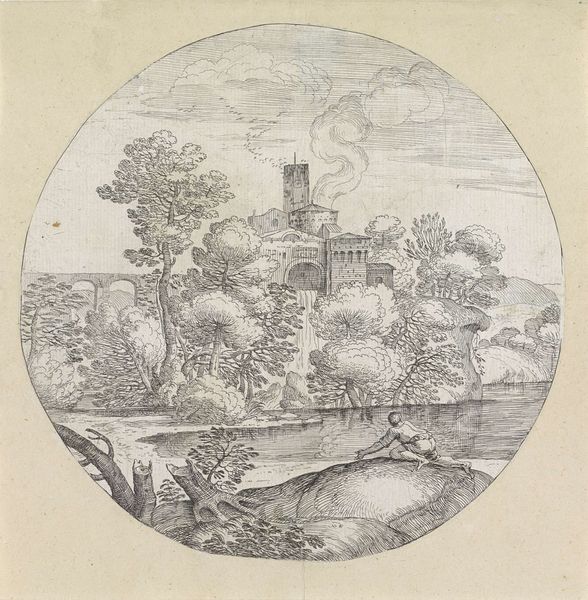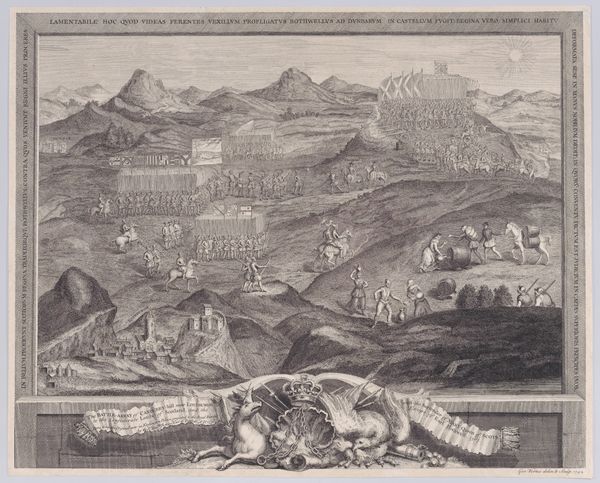
drawing, print, engraving
#
drawing
# print
#
landscape
#
history-painting
#
engraving
Dimensions: Image: 4 7/16 × 4 7/16 in. (11.3 × 11.3 cm) Sheet: 4 7/16 × 4 7/16 in. (11.3 × 11.3 cm)
Copyright: Public Domain
Curator: Here we have Wenceslaus Hollar’s “Landscape with a House on Cliffs,” an engraving dating back to 1646, housed right here at the Metropolitan Museum of Art. What are your first thoughts? Editor: Striking. There’s an undeniable serenity radiating from it, almost a pastoral ideal. And yet, that imposing rock face lends a touch of melancholy, wouldn't you agree? Curator: Indeed. Let's consider the physical aspect; Hollar, of course, didn't paint, but he printed with copper plates using a burin. It makes me consider the repetitive gestures necessary for achieving these tonal qualities. Look at the variety of textures achieved with a single tool. How does the uniformity of the medium speak to us of industrial capacity? Editor: An interesting point. However, consider the symbolism embedded within. That house atop the cliff represents security, aspiration even. Below, we see a suggestion of classical allegories. Look at the suggestion of Arcadia in those shepherds crossing the lower foreground. They hint at something profound. Curator: I suppose. What stands out is this image production made reproducible and therefore democratic. One can bring this landscape home. Hollar created art to disseminate, to enter into commodity exchange and popular culture. What symbols reside in *that* notion of circulation? Editor: Perhaps, but the romanticism of the natural world juxtaposed with that distant dwelling… it speaks to our enduring desire to tame, or maybe integrate with, untamed nature. A classical trope revived and relevant even today. And observe that the cliff dominates almost the entire lower part, it dwarfs the home which seems isolated instead of secure! Curator: Well, yes, I think that dichotomy really illuminates the complexities of art production in the 17th century. Landscape evolves as a distinct category in prints precisely at the moment the land begins to be transformed. Editor: Thank you for shedding a new light on what appears at first to be a simple depiction of landscape and classical imagery. Curator: It only takes looking a little bit more closely, and being curious.
Comments
No comments
Be the first to comment and join the conversation on the ultimate creative platform.

